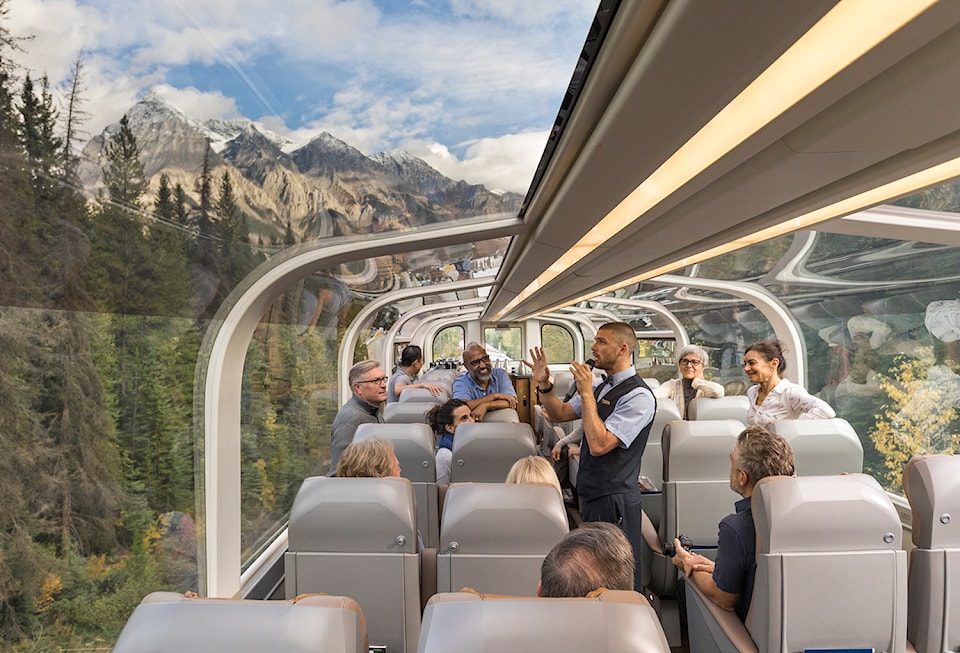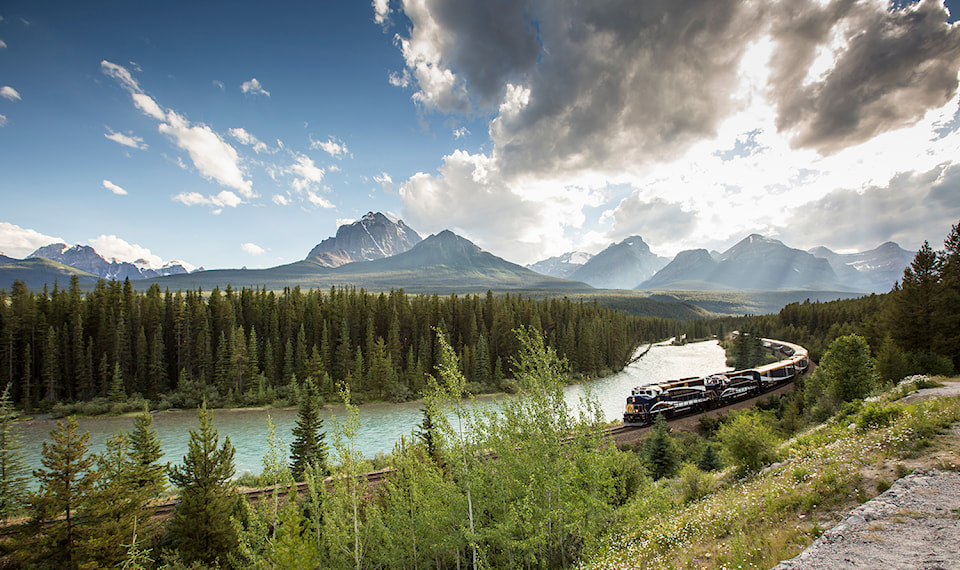If you’ve followed the story of Rocky Mountaineer from its inception in 1990, it won’t surprise you to learn the luxury tourist train company has expanded into the US.
Built on the bright idea that people will pay good money if they can travel through the Rockies during daylight hours in the lap of luxury, the company began with a single route—Vancouver to Banff and Lake Louise. Since then, it’s added more: Vancouver to Whistler; Vancouver to Jasper through Whistler; Vancouver to Jasper through Kamloops.
But eventually, it was bound to run out of Rockies.
But, of course, the Rockies aren’t limited to Canada. They extend south through half a dozen American states. Still, can a train trip through the US Rockies even begin to compare with a journey through ours?
I am doubtful as I climb onto a familiar-looking sky-blue train in the Utah desert one day last spring. Pulling out of Moab, I recall my very first experience with Rocky Mountaineer. It was on the “Christmas train” from Vancouver to Banff that operated every December for a few years. My then-10-year-old daughter and I stood on the open caboose breathing in the scent of a snow-draped evergreen forest in winter, while the Kicking Horse River galloped by our side. It was terribly romantic—and tough to top.
Now, a red desert stretches before me. It’s nothing like “our” Rockies, but I’ll admit, the rock formations are as intriguing as the dramatic skies. Soon we spot our first wildlife, pronghorn antelope. With their white rumps, they’re hard to miss and Michael, our on-board host, tells us they’re similar to another creature we’ll see further along.
“On your left is the Little Book Cliffs Wild Horse Range,” he continues, narrating while serving the first of several meals we’ll enjoy on-board over two days. On this route, we all eat at our seats because the tunnels are too small to accommodate Rocky Mountaineer’s double-decker cars with separate dining areas. However, there is a bar car and we’re free to move around.
A few hours into the journey, we leave Utah and enter Colorado, coming alongside its namesake river. The Colorado famously carved Arizona’s Grand Canyon, but these days it’s infamous for being sucked dry before a drop of water reaches its mouth in the Gulf of California.
This river will keep us company for the next 500 kilometres or so as it slices through gorges, tumbles over boulders and irrigates farm fields.
Slowing to go through the tiny town of Palisade, we get an actual taste of the river when Michael opens a bottle of deep red Colterris Winery’s Coloradeaux. The grapes grew in the very vineyard we see out the window. Palisade was Colorado’s first grape-growing region and today boasts more than 30 wineries, thanks in large part to the river running through it.
Moving east, the landscape gets greener and lusher and before long we pull into Glenwood Springs for the night. As with Rocky Mountaineer’s Canadian routes, guests stay in hotels rather than miss any scenery. The train waits for us.
With its white picket fences, patriotic flags and purple-flowering lilac bushes, Glenwood Springs looks so wholesome it feels a little Hollywood-esque. Coming across the local gun shop is a useful reality check.
But what really interests me is the town’s claim to having “the world’s largest mineral hot springs pool.” Within half an hour of checking into my room at the historic Hotel Denver I’m up to my ears in steaming hot water.
As the sun sets over red sandstone cliffs, artificial lights illuminate the pool’s astonishing length of 123.4 metres. (An Olympic pool is only 50 metres long.) Judging by the faces around me, this place attracts visitors from all over the world, and everyone is enjoying the 32- to 34-degree-Celsius water.
The next morning, a few of us walk through town to the hillside cemetery, where John Henry “Doc” Holliday is thought to be buried. Holliday was a “skillful gambler and the nerviest, speediest, deadliest man with a six-gun I ever knew,” according to Wyatt Earp, the gunslinger with whom he got involved at the famous shootout at the O.K. Corral in Tombstone, Arizona in 1881. He moved here hoping to be cured of tuberculosis but, alas, the hot water couldn’t cure him.

Back on board the Rocky Mountaineer, we experience a change of scenery and weather. It will even snow before the day is done. The mountains get higher, and impressive tunnels bore through them. Moffat Tunnel is the most spectacular. It cuts through the Continental Divide for 10 kilometres and cost David Moffat, a railroad pioneer and banker, his entire fortune plus public funds when it was built in 1928.
The Colorado River now also picks up its pace, surging through canyons, constrained only by some of its 15 power dams, the most of any American river.
Around mid-day we start to see people rafting the river and practising what’s called the “Colorado Salute.” Michael tells us it’s a long-standing tradition in Colorado for rafters to stand and “moon” passing trains. And soon, we’re laughing out loud, not at their lack of athletic prowess, but at their lack of modesty. Even on this cool, wet day, they don’t drop the ball; they only drop their pants at the appropriate moment! And yes, Michael was right. With their bare buttocks, they do look a little like those pronghorn antelope we saw the first day.
Arriving at Union Station in Denver, we’re feeling that Rocky Mountain high that John Denver sang about five decades ago. It’s not just that we’ve been eating and drinking to our stomachs’ content. The scenery has been riveting, the locals entertaining and the camaraderie of other guests endearing.
I have to say, now I’m looking forward to experiencing the Rocky Mountaineer in the four other American states home to the Rockies—Wyoming, Montana, Idaho and New Mexico. I’m ready when you are, Rocky Mountaineer.
The two-day Rockies to Red Rocks tour starts at $ $2,261 CAD and you can start in either Moab or Denver. Longer packages are available with excursions at either end. One includes a full day of rafting the Colorado River where, presumably, you too can learn the Colorado Salute.



